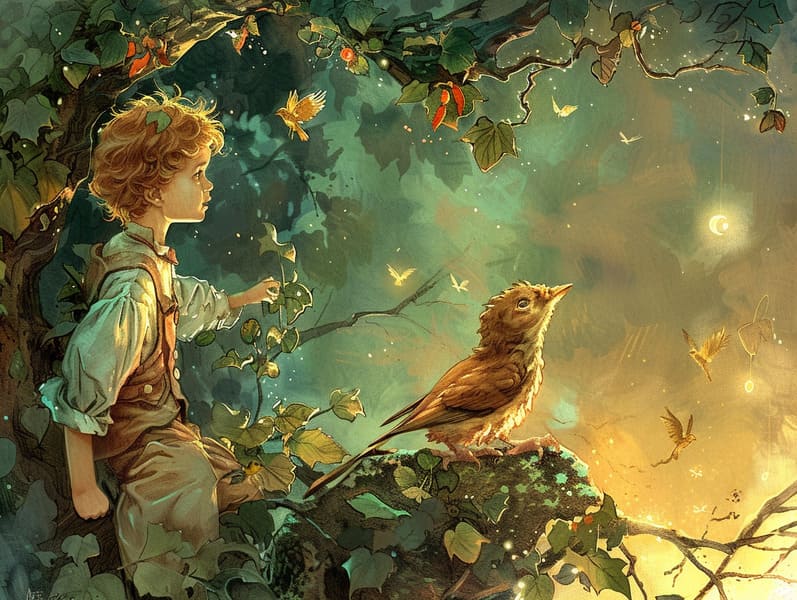The Creation of Popular Fairy Tales with the Steadfast Grace.
The Creation of Popular Fairy Tales with the Steadfast Grace.
Blog Article

Old fairy tales have historical significance. These stories have been passed down from one generation to the next centuries before they were ever written down. They sprang from a variety of civilizations, including European traditions. They were initially shared among adults, often carrying themes and messages pertaining to the societal norms and beliefs of the time.
The Brothers Grimm, Jacob and Wilhelm Grimm, were among the first to compile many of these beloved stories. Their collection, "Grimm's Children's Stories," included narratives like "The Little Glass Slipper," "Little Brother and Little Sister," and "Schneewittchen," which have since become pillars in the world of traditional fairy tales. Similarly, H. C. Andersen's fantastical narratives, such as "The Sea Maid," and "The Ugly Duckling," have won hearts worldwide, solidifying their place in the pantheon of timeless fairy tales.
Though they are old, fairy tales remain as meaningful as ever, especially as children's night stories. These fantastical tales are now available in different formats, including richly illustrated books, fantastical animations, and free fairy tales online.
Their enduring popularity can be traced to several enchanting factors:
Ethical Lessons: Traditional fairy tales often share important moral lessons. Tales like "The Wolf and the Liar" teach the importance of truth, while "The Hare and the Tortoise" emphasize the values of tenacity and humility. These stories offer little ones clear distinctions between virtue and vice, forming their moral compass in a subtle yet meaningful way.
Kindness and Comprehension: Old fairy tales frequently present personalities facing trials and tribulations, motivating kids to empathize with their struggles and root for their triumphs. For instance, "Beauty's Beast" points out the value of seeing inner beauty to recognize the true nature of a soul, nurturing empathy and knowledge.
Cultural Understanding: Many traditional fairy tales are saturated in the cultural contexts from which they were born. Engaging with these fairy tales can provide illuminating insights into different traditions, advancing a sense of cultural insight and acknowledgment.
Fantasy and Innovation: The fantasy-filled elements in fairy tales—talking beasts—stimulate children’s fantastical thinking. These tales lead readers to enchanted realms, motivating imaginative thinking and a sense of amazement that stays a lifetime.
Ancient fairy tales are not only magical but also enlightening. They work as delightful tools in promoting various mental and emotional abilities in young ones. When ancient fairy tales are spoken out loud, they advance communication skills by teaching new words and complex sentence structures. This practice also fosters listening abilities and attention, as children hang on every word, enthusiastic to see what happens next.
Furthermore, debating the themes and characters of classic fairy tales can sharpen thought processes and logical thinking. Young ones are instructed to discover patterns, anticipate outcomes, and make sense of cause and effect. These conversations also help little ones convey their thoughts and feelings, boosting their emotional intelligence.
In today’s online age, the abundance of web-based fairy tales has made these tales more acquirable than ever. Online resources and apps give huge assortments of ancient fairy tales that can be accessed or listened via anytime, anywhere. Fairy tales spoken are particularly sought after, extending an interactive method for kids to immerse in these charming stories. Sound books and voiced videos transport characters and settings to life, often supplemented by mesmerizing sound effects and tunes that heighten the tale journey.
The enduring charm of ancient fairy tales lies in their ability to shift to present eras while sustaining their main lessons. Contemporary reimaginings of these stories often highlight more different protagonists and modern settings, making them relatable to today’s audience. However, the basic principles of courage, empathy, and fair-mindedness remain unchanged, continuing to connect with young listeners of all read more ages.
Timeless fairy tales also offer a sense of comfort and familiarity. They highlight a structured narrative with a recognizable beginning, middle, and end, often ending with the finalization of conflicts and the triumph of virtue over vice. This uniformity can be solacing for kids, giving a sense of invariability in an unstable world.
Classic fairy tales continue to bewitch and instruct new generations, maintaining their wonder and meaningfulness in modern society. As nighttime stories for kids, they make available a perfect blend of captivation and insight, nurturing moral values, empathy, and creativity. The presence of digital fairy tales and the favor of fairy tales narrated warrant that these classic narratives remain reachable to new generations.
By continuing and imparting these tales, we continue to honor the rich tapestry of cultural legacy and cultural heritage. Whether you are seeing a beautifully illustrated book, experiencing a online collection, or listening through an read-aloud story, the radiance of traditional fairy tales is always within reach. These tales convey of the enduring influence of narratives and its ability to bond us across centuries and lands.
Whether you are enjoying a beautifully illustrated book, seeing a internet library, or listening to an sound book, the charm of old fairy tales is always within reach.
These tales teach us of the enduring power of storytelling and its ability to bind us across eras and regions, establishing a link that enchants and educates alike.